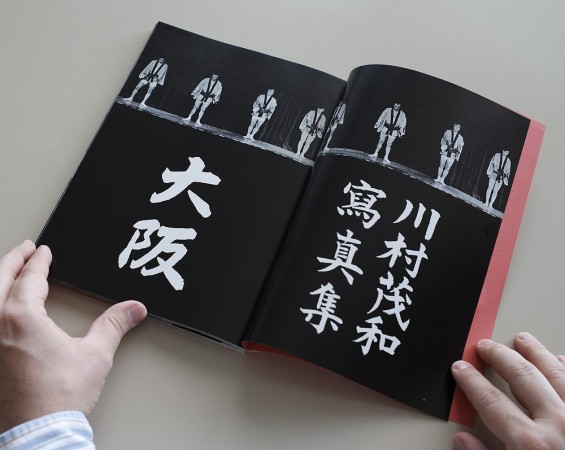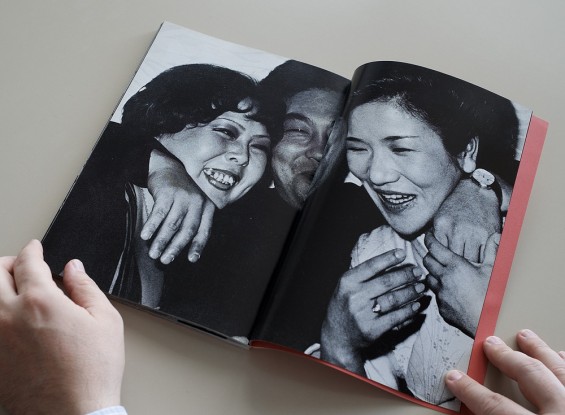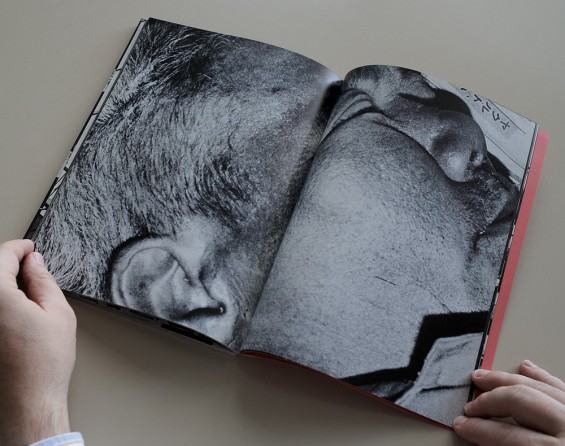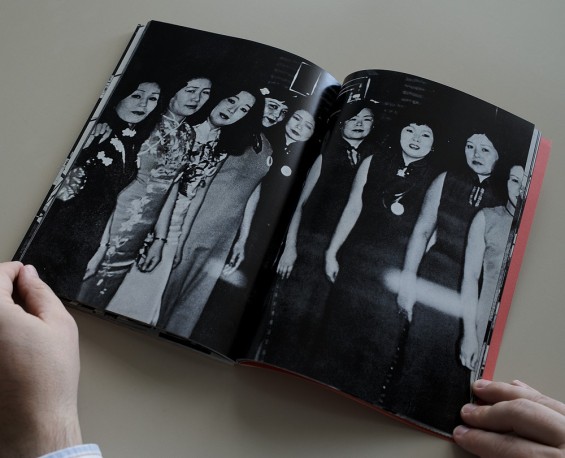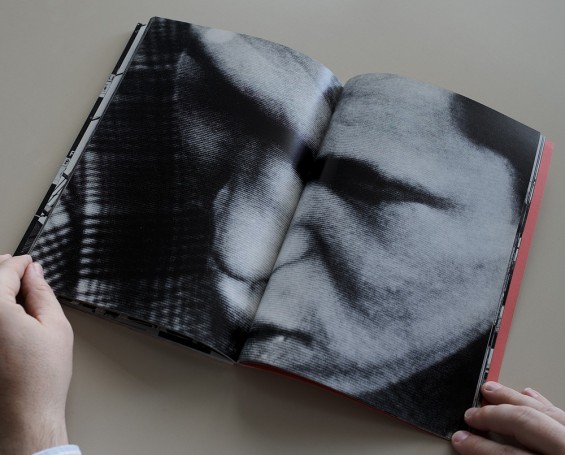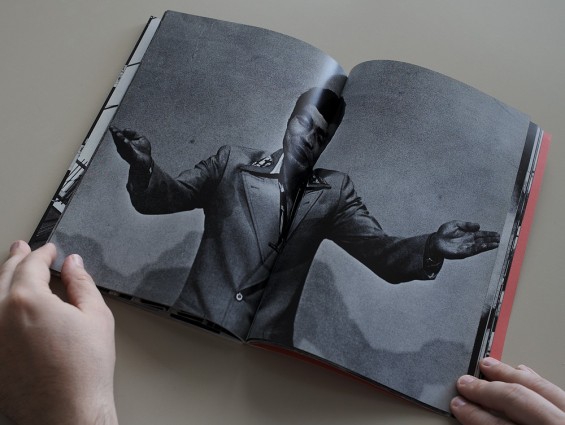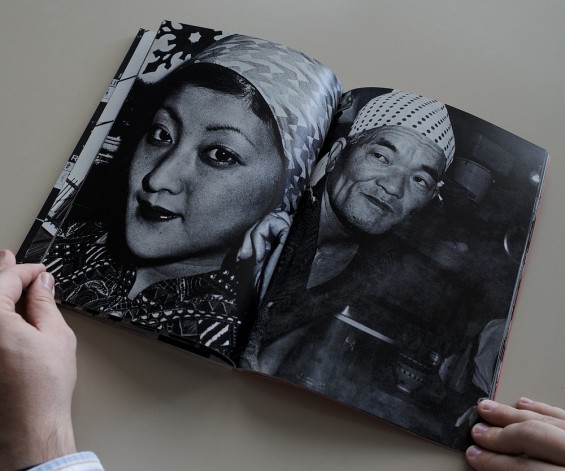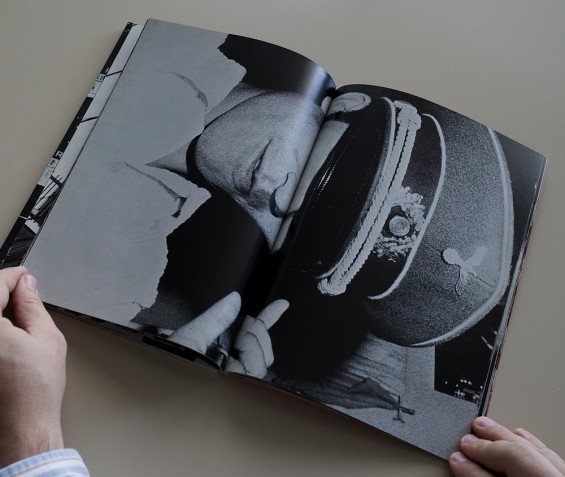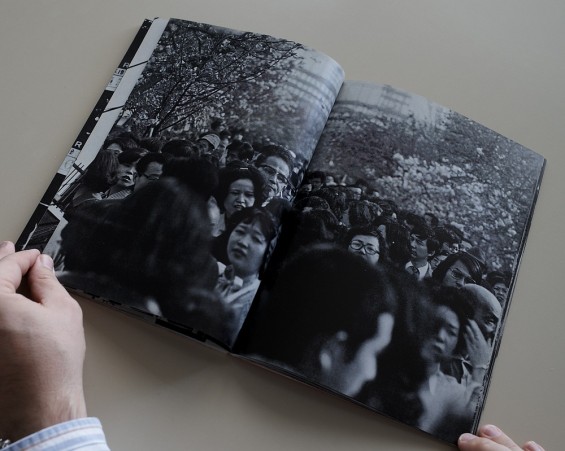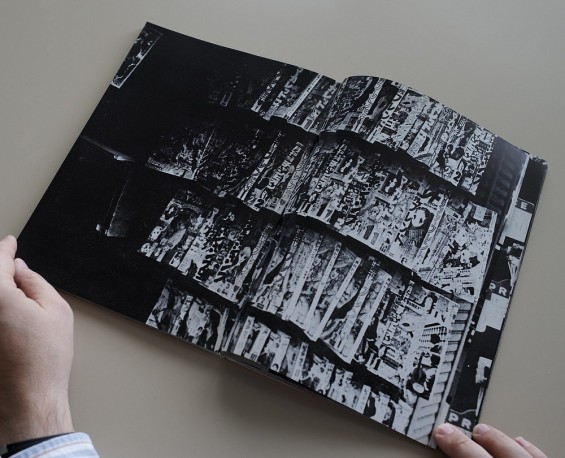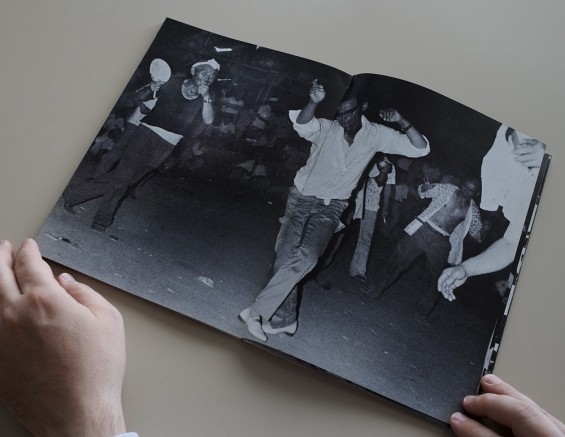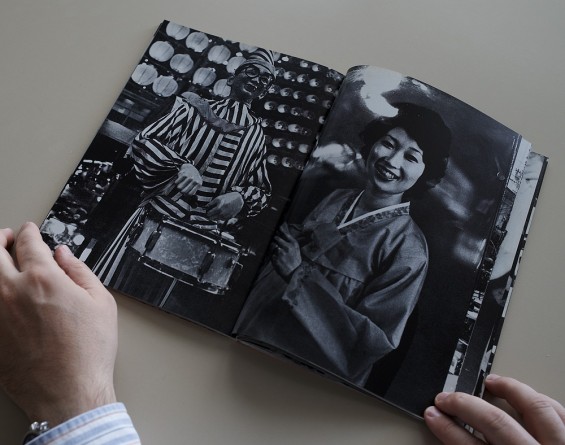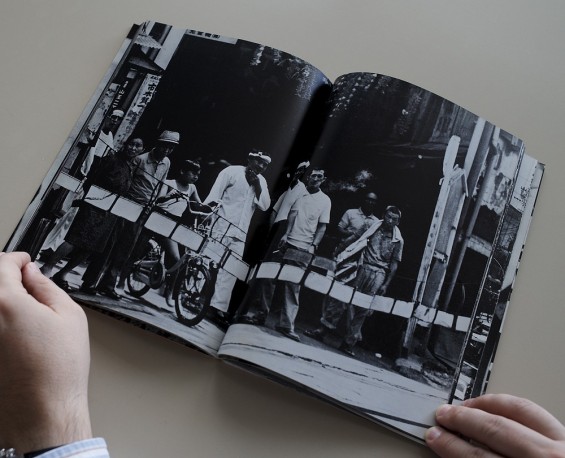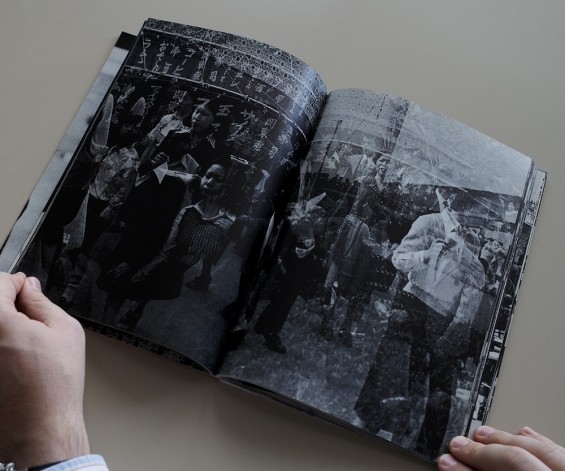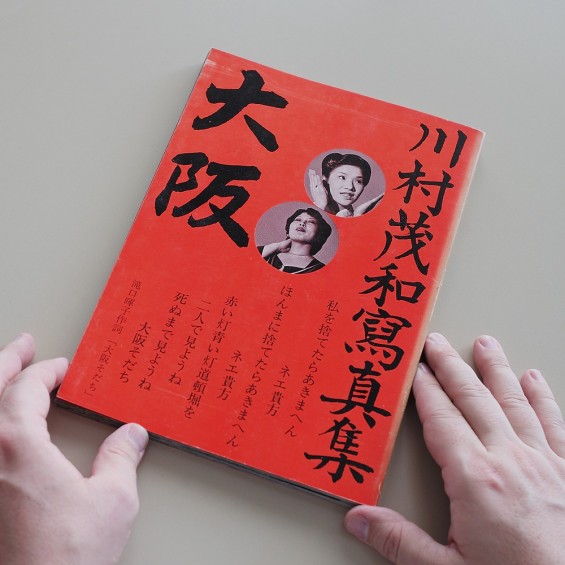 Shigekazu Kawamura, Osaka, Self-published, Japan, 1978
Shigekazu Kawamura, Osaka, Self-published, Japan, 1978
Regular readers of this space will have noticed our special love for Japanese photobooks. But I have to confess that there is a slight problem: unlike my friend Amarillo, I don’t speak the language, and the little I know of Japanese culture comes from an unhealthy attachment to the yakuza films of Takeshi Kitano. If I don’t speak the language and don’t fully understand the culture, all that’s left for me when facing a Japanese photobook is to look at it the way I listen to a foreign language song, tapping my feet and bobbing my head to the rhythm hoping not to make too much of a fool of myself.
These thoughts come to mind when trying to make sense of a photobook like this one, with one of the ugliest covers I’ve ever seen, big black letters on a bright red background and two small round photographs of what look like singers or performers. It seems to be something about theater or music, I would never have thought this was a photobook. Of course, if I could read the language it would be very clear, because that is what those big black letters on the cover say: Osaka, a photobook by Shigekazu Kawamura. Interestingly, that first impression was not entirely wrong. The small letters on the cover are the lyrics Teruko Takiguchi wrote for a song titled I’m from Osaka:
You don’t have to kick me out
Listen darling
I will not forgive your rejection
Listen darling
The red and blue lights in Dotonbori street
We’ll watch them together
Until we die
I’m from Osaka
Inside, on the title page, the book starts with a line of eight performers standing on the stage with some of them looking down. Only if you look closely you notice that it is really two pictures of the same four performers a couple of seconds apart. They are standing there and it is not clear what is going on. Are they about to bow? Is the performance over? Is it about to begin?
What follows is a series of pictures of singers, actors and performers, mixed with publicity stills, neon signs, restaurants, pachinko parlors, people in bars, drunks, lights, television images. The rhythm is fast, you never know what’s coming next, and the design is bold and tight: some spreads are so well composed you have to check twice to see if it is one picture or two and vertical portraits are thrown horizontally across the gutter cutting faces in two. Every spread is brilliant and witty, you just want to keep going: bam bam bam.
It is only after a while that you start to notice like a bass line through the book, something strange going on below the threshold of perception. It is the printing itself: it uses a coarse screen, as if it were going to be printed on a much lower quality paper than the one used. If you look closely you can see clearly the ink dots that form the images. The book mixes photographs of the real world and photographs of other images. These photographs of printed images would have a different texture to the direct images, but the coarse screen dilutes this difference in texture blending the image world and the real world so that you have to wonder whether you are looking at a photograph or a photograph of a photograph.
Towards the end of the book there is a text by Daido Moriyama titled On the road to… In it he writes:
Photographs must not be fundamentally creation. They are always related to this world. They seem to be very real, being also very abstract. Not only creation, but reproduction. When you look at them, they look back at you. Photography has a superiority over the continuous flow of a scene but at the same time it struggles not to be carried away into the infinite river of paradox. Shigekazu Kawamura was at that PLACE a moment ago. He was in Osaka with the fragments he just collected. But he has thrown himself already at the center of another current. He can’t stay in the same place. Before, someone shouted: ‘Return to the photograph!’. I understood. But there is no place to return to.
In the second half of the book a few scattered pictures appear that seem to be out of place, subtly playing to a different key. Pictures of homeless people, workers, children, quiet street scenes. They point out that the Osaka of fun and glamour, of parties and theater, of street hoodlums and politicians, is just a screen, and behind it a very different life goes on.
In the last photograph of the book the photographer looks at us, bows and says sayonara, while on the back-cover the song continues:
What could I do if I can’t see you anymore?
Listen darling
You will break my heart
Listen darling
I see the Tsutenkaku tower through my tears
I feel lonely
I am sad
I am from Osaka
(Translation of Japanese texts into Spanish by Kimi Saito. Translation from Spanish to English by the author)
Shigekazu Kawamura
Osaka
Self-published in Osaka, Japan;
First edition, 1978

